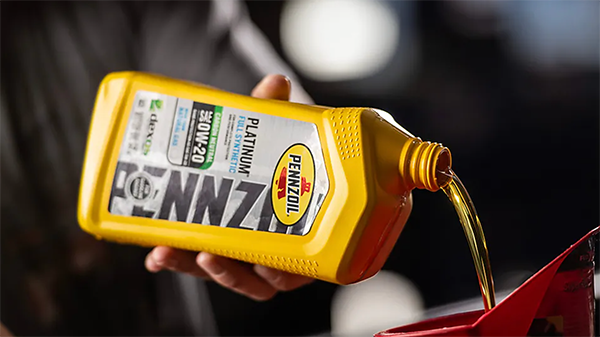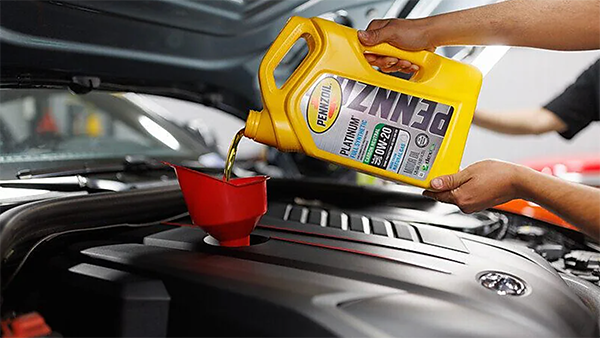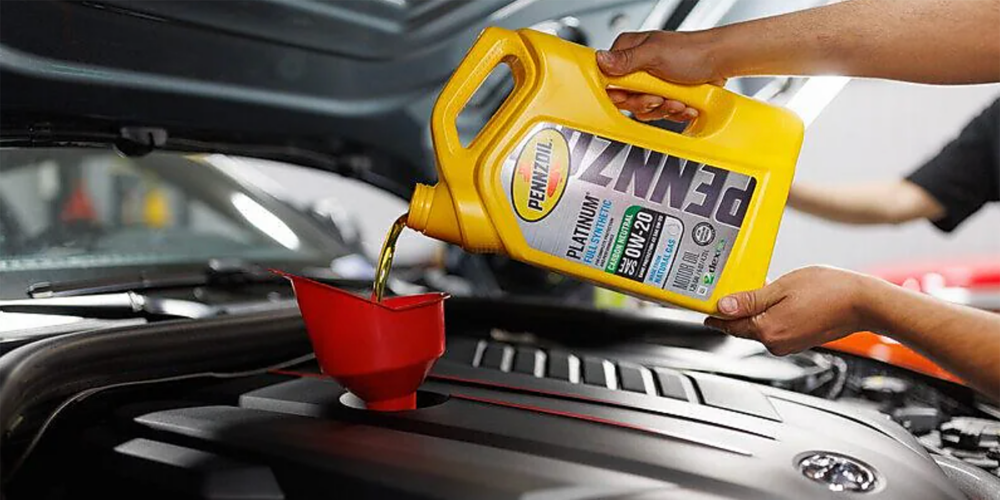For more than 90 years, Pennzoil has worked alongside the American Petroleum Institute (API) to ensure Pennzoil products meet – and often exceed – the stringent requirements of motor oil specifications implemented to best help protect the performance of your engine.
With the industry ever-evolving, Pennzoil sat down with API Senior Manager, Jeff Harmening, to take a closer look into how motor oil standards are developed to meet the needs of newer vehicles.

PENNZOIL: What is the role of API in developing motor oils standards?
HARMENING: API works across the auto industry to develop motor oil standards that meet changing lubrication demands as engine technology advances. We have been working with vehicle and engine manufacturers, oil marketers, additive companies, and others to develop these standards and license engine oils that meet them for almost four decades through the Engine Oil Licensing and Certification System (EOLCS).
PENNZOIL: What is the process for developing motor oil standards?
HARMENING: Annex C of API 1509 describes the consensus-based process for developing new gasoline engine oil standards for API certification marks. This helps to ensure that technically sound, reliable performance standards are created to meet the needs of the variety of engines in the present and for future engine designs.
There are three phases to the creation of a new specification:
- Phase 1 – Category request and evaluation
- Phase 2 – Specification development
- Phase 3 – Adoption of the Auto/Oil Advisory Panel (AOAP) specification
When a formal request has been received by API, the Auto-Oil Advisory Panel (AOAP), co-chaired by API and the OEMs, is assembled and the evaluation of the request begins. Once the AOAP evaluates and determines that the new specification is needed, the OEMs begin the complex and lengthy task of developing the performance tests necessary to support the category needs.
As the OEMs deliver each of the individual performance tests, AOAP is working to develop a draft specification. After the draft is completed and dispersed to all industry participants for review, AOAP works to achieve consensus among all the interested parties and ensures that the process for creating the new specification provides complete transparency.
The challenging process to develop the current standards, ILSAC GF-6A, ILSAC GF-6B and API SP, demonstrates how the procedures in API 1509 Annex C worked successfully to ensure that technically-sound, reliable performance standards were created to meet the needs of the variety of engines in the present and future engine landscape. This same process is being used to develop ILSAC GF-7 motor oils.

PENNZOIL: What is the background on the development of ILSAC GF-7 motor oils?
HARMENING: Last August (2022), the International Lubricants Standardization and Advisory Committee (ILSAC) formally requested that a new gasoline engine oil specification be developed for first licensing in 2028. ILSAC is requesting a new category, GF-7, which will provide EPA fuel economy improvements and lower exhaust emissions. Additionally, GF-7 would provide Aged Oil Low-Speed Pre-ignition (LSPI) protection, reduced piston deposits and chain wear, along with a sulfated ash limit for gasoline particulate filter (GPF) protection. The Auto/Oil Advisory Panel (AOAP) then began the evaluation process of the specification.
PENNZOIL: What are the latest developments on GF-7?
HARMENING: The AOAP is currently evaluating the requested category upgrades as they relate to other industry proposals, including the addition of SAE 0W-8 and 0W-12 viscosity grades to the ILSAC GF-6B and the request to develop ILSAC GF-7 oils. The AOAP is looking at ways to consolidate the proposals into a cohesive process that will accomplish the goals of each and ensure an efficient implementation. There are several proposals to modify how GF-7 oils will be developed. Among the options is to develop a GF-7 for first licensing in early 2025 which would be followed by GF-8 in 2028.
PENNZOIL: What other programs are part of EOLCS?
HARMENING: The most recognizable program from EOLCS is the voluntary licensing and certification program that authorizes engine oil marketers that meet specified requirements to use the API Engine Oil Quality Marks.
The API Aftermarket Audit Program (AMAP) supports the licensing and certification program by overseeing the sampling of API-licensed oils in the marketplace and testing them to verify compliance with engine oil specifications. This ensures that oil marketers, distributors, installers, and consumers can have confidence in the quality of API-licensed motor oils in the marketplace.
API-licensed engine oils are purchased in packages and from bulk tanks in the marketplace and tested to determine their physical, chemical, and performance properties. The results are compared to the formulations submitted by the licensed oil marketer to API. Conforming oils will show test results that are consistent with the formulations on file with API and meet the API specifications claimed as well as all EOLCS program requirements.
For more information on the American Petroleum Institute and to keep up with the latest updates in the motor oil industry, head to api.org or check out API on Twitter!














